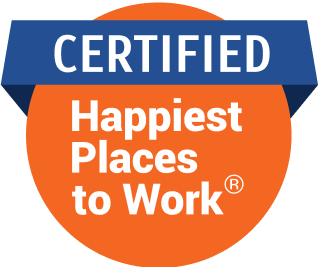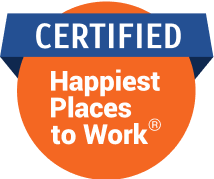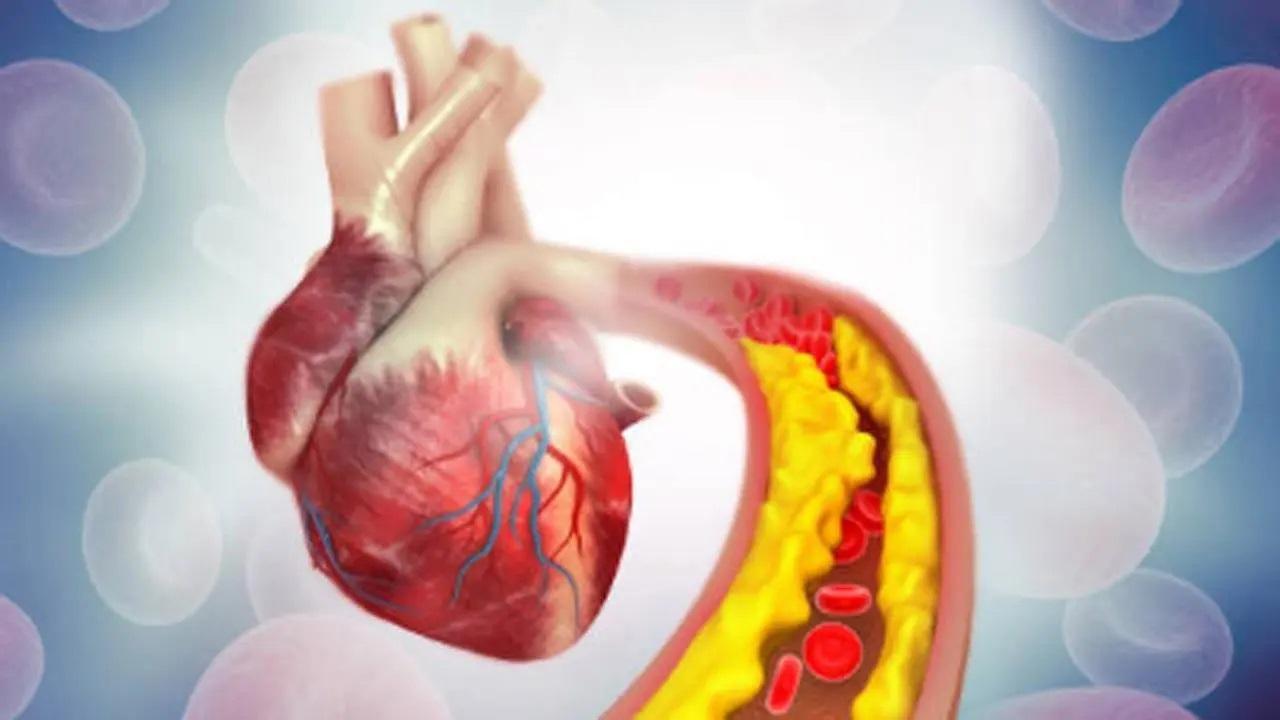Read Health And Fitness News
People with autistic disorders are entitled to get gainful employment: Experts
People with autistic disorders need to be provided with skill training to get gainful employment besides being treated with empathy, feel many domain experts. Globally, the prevalence of neurodevelopmental disorders is rising, with autism affecting one in 100 children according to WHO, psychotherapist Minu Budhia said. "The focus should be on skill building in a sensory-friendly environment with social communication training. Organisations need to create an inclusive autism-friendly workspace," Budhia said. Conditions such as ADHD (Attention Deficit and Hyperactivity Disorder), intellectual disabilities and learning disorders also impact millions, making neurodiversity far more common than we realise, Budhia said. Individuals on the autism spectrum do not need pity, she said, adding, "They need our understanding. Empathy to my mind means seeing their strengths, celebrating their abilities, and providing the right support to help the neurodiverse to thrive in a neurotypical world". Budhia, founder of Carring Minds International also said that as a mother to a special child, she witnessed the power of empathy firsthand. "Empathy fuels attitudinal shifts. When teachers, educational institutes, employers and society keep an open mind, individuals with autism can lead fulfilling lives on their terms," she said. According to rehabilitation psychologist Amrita Panda, people living with autistic spectrum disorder should be imparted with vocational skill training to get gainful employment. "These people should be treated with empathy and not sympathy", she said. Deepranjani Foundation, founded by Panda to empower adolescents and adults with cognitive or behavioural disorders, has identified five areas for skill training and subsequently provides employment. "The five areas where skill training is given to autistic persons are multimedia, bakery, spice making, handicrafts and tailoring," Panda said. She said that the foundation secures orders from companies in these five areas which are then produced in the units manned by autistic adolescents and adults. A part of the proceeds, which arise from the order supplies, are then distributed as salaries along with statutory benefits like PF and ESI. According to Budhia, parents and educators miss early signs due to lack of awareness. Panda said to spread the perception about such cognitive and behavioural disorders on the occasion of World Autism Awareness Day which falls on Wednesday (April 2), the foundation has tied up with Vaishali Skill Development Centre, a Section 8 company not-for-profit, to enhance skilling opportunities and employability training. This story has been sourced from a third party syndicated feed, agencies. Mid-day accepts no responsibility or liability for its dependability, trustworthiness, reliability and data of the text. Mid-day management/mid-day.com reserves the sole right to alter, delete or remove (without notice) the content in its absolute discretion for any reason whatsoever.
02 April,2025 10:47 AM IST | Kolkata | PTIKolkata-born Jay Bhattacharya takes office as head of US medical research body
Jayanta 'Jay' Bhattacharya on Tuesday took over as the 18th Director of the US National Institutes of Health, which is the country’s premier medical research agency. Dr Bhattacharya is one of the senior-most Indian-Americans in the Donald Trump administration. He was nominated to the position in November and was confirmed by the US Senate on March 25. The top Indian-American in this administration is Second Lady Usha Vance. He will "play an instrumental role in shaping the agency’s activities and outlook and ensuring they align with the President’s Make America Healthy Again agenda", the NIH said. "Under Dr Bhattacharya’s leadership, NIH will restore its commitment to gold-standard science," Health and Human Services Secretary Robert F. Kennedy, Jr, said. "I'm excited to work with Dr. Bhattacharya to ensure NIH research aligns with our Administration’s priorities - especially tackling the chronic disease epidemic and helping to Make America Healthy Again." Dr Bhattacharya said: "Chronic diseases such as cancer, heart disease, diabetes and obesity continue to cause poor health outcomes in every community across the United States. Novel biomedical discoveries that enhance health and lengthen life are more vital than ever to our country’s future." "As NIH Director, I will build on the agency’s long and illustrious history of supporting breakthroughs in biology and medicine by fostering gold-standard research and innovation to address the chronic disease crisis." Born in Kolkata, he earned BA and MA degrees in economics at Stanford University and then went on to earn a doctorate in medicine and a PhD in economics from the same university. Dr Bhattacharya caught national attention in the aftermath of the Covid-19 outbreak when he publicly opposed the lockdowns and the mask mandate.”We have grave concerns," Bhattacharya and his two co-authors wrote in a widely cited paper titled the “Great Barrington Declaration". "We have grave concerns about the damaging physical and mental health impacts of the prevailing Covid-19 policies."
02 April,2025 10:26 AM IST | Washington | IANS560-gram premature newborn baby in Noida overcomes two-month NICU battle
A hospital in Noida recently witnessed a miraculous medical achievement where a preterm baby born at just 28 weeks, weighing a mere 560 grams, overcame life-threatening complications and was discharged healthy after two months in the Neonatal Intensive Care Unit (NICU). The baby’s parents, Vaishnavi (30) and Saurabh (34) from Banaras faced a challenging pregnancy journey. Vaishnavi’s ordeal began with mild bleeding during the initial five weeks, which persisted until the 14th week. At five weeks of pregnancy during routine antenatal tests, she was diagnosed with gestational diabetes mellitus (GDM) with alarmingly high HBA1C levels of 11. To stabilise the pregnancy, Dr Prerna Sharma, consultant - obstetrician and gynecologist at Motherhood Hospital in Noida initiated treatment that included medications, dietary adjustments, and regular monitoring. Around 20 weeks pregnancy was going fine, all blood tests and ultrasounds were routine but the mother started having raised blood pressure which was managed with medication. The situation became more complicated when a 26-week ultrasound revealed impaired fetal growth, mild oligohydramnios (low amniotic fluid levels), and slight abnormalities in the Doppler flow study. This prompted the administration of medications to enhance blood flow and support the baby's development. However, after treatment, the Doppler growth showed little improvement. Her condition worsened due to deranged Doppler readings, indicating reduced blood supply to the baby, severe oligohydramnios (low amniotic fluid levels), and severe growth restriction at 28 weeks, the risk to both mother and baby had escalated significantly, necessitating an emergency cesarean section to save the baby’s life. Dr. Prerna Sharma, consultant - obstetrician and gynecologist at the hospital, explained, “Managing such a high-risk pregnancy required meticulous care and constant vigilance. Vaishnavi’s condition was critical, with severe GDM and FGR compounding the risks. Despite the challenges, the timely interventions ensured the best possible outcome for both mother and baby. This case is a testament to the power of early detection and comprehensive care.” A team of experts led by Dr Amit Gupta, Dr Nishant Bansal, and Dr Navina Desai provided advanced NICU care to address complications arising from extreme prematurity. The baby was placed on a ventilator and given surfactant therapy to support lung maturity. Gradual improvements allowed her to transition to CPAP support and later to independent breathing. During her NICU stay, she battled sepsis and jaundice, which were successfully managed with antibiotics and phototherapy. Dr Amit Gupta, senior consultant - Paediatrician & Neonatologist, at the hospital, shared, “Preterm babies like this face an uphill battle from the moment they are born. Each day in the NICU was a step toward recovery, requiring careful attention to every detail, from respiratory support to nutritional needs. This baby’s remarkable journey showcases the strength of modern neonatal care and the resilience of life itself.” The baby’s progress was monitored through regular cranial ultrasounds, which showed normal development, and screenings for Retinopathy of Prematurity (ROP), which were clear of any abnormalities. Dr Gupta and Dr Nishant Bansal, senior consultant - paediatrician & neonatologist at the hospital elaborated, “The baby had severe respiratory distress and underdeveloped organs, which required immediate and sustained intervention. Surfactant therapy and ventilator support were crucial in the early days, followed by CPAP for several weeks. Kangaroo Mother Care also played a vital role in promoting her growth and stability. This outcome reflects the dedication and expertise of our team and the advanced facilities available at our hospital.” After two months of intensive care, the baby was discharged weighing 1.6 kilograms. She continues to show positive signs of growth and development, achieving milestones appropriate for her age. Regular follow-ups will ensure her continued progress and well-being. Saurabh, father of the baby girl said, “We are eternally grateful to the entire team at Motherhood Hospital, including the doctors, nurse staff, and LDR team, for their exceptional care and support throughout this journey. Their compassion, and timely intervention gave our daughter the chance to survive and thrive.”
01 April,2025 06:32 PM IST | Noida | mid-day online correspondentSpending hours watching reels harming Indian kids' eye health, warn experts
Leading ophthalmologists on Tuesday warned that they are witnessing a sharp increase in cases of dry eye syndrome, myopia progression, eye strain and even early-onset squinting in children who spend hours watching reels on various social media platforms. After raising the alarm bell about the impact of short-form videos on mental health, doctors are now concerned about a new, growing crisis — ‘Reel-Induced Eye Damage.’ Excessive screen time, particularly binge-watching reels on social media platforms like Instagram, TikTok, Facebook, and YouTube, is leading to a spike in eye disorders across all age groups, especially among children and young adults, said healthcare experts during the joint meeting of Asia Pacific Academy of Ophthalmology and All India Ophthalmological Society in the national capital. “A student recently visited us complaining of persistent eye irritation and blurry vision. After examination, we found his eyes were not producing enough tears due to prolonged screen time at home watching reels,” said Dr Lalit Verma, President, Asia Pacific Academy of Ophthalmology. “He was immediately put on eye drops and advised to follow the 20-20-20 rule — taking a 20-second break every 20 minutes to look at something 20 feet away,” said Verma. Studies show that an increasing number of people, especially students and working professionals, are struggling with digital eye strain, squinting, and worsening eyesight due to prolonged exposure to high-speed, visually stimulating content. Doctors also note a troubling trend of social isolation, mental fatigue and cognitive overload associated with constant reel consumption. Dr Harbansh Lal, Chairman of Organising committee and Past President of All India Ophthalmological Society (AIOS), explained the severity of the issue at the event. “Short, engaging reels are designed to capture and hold attention for long periods. However, this constant screen fixation reduces blink rates by 50 per cent, leading to dry-eye syndrome and accommodation spasms (difficulty in shifting focus between near and distant objects),” he noted. Experts warn that if this habit continues unchecked, it could result in long-term vision problems and even permanent eye strain”. “Children who are glued to reels for hours daily are at risk of developing early myopia, which is progressing faster than ever before. Adults, too, are experiencing frequent headaches, migraines, and sleep disorders caused by blue light exposure,” Dr Lal emphasised. Studies show that an increasing number of people, especially students and working professionals, are struggling with digital eye strain, squinting, and worsening eyesight due to prolonged exposure to high-speed, visually stimulating content. Doctors also note a troubling trend of social isolation, mental fatigue, and cognitive overload associated with constant reel consumption. Dr Samar Basak, President of AIOS and a senior ophthalmologist, highlighted the social and psychological toll of excessive screen time. “We are seeing a concerning pattern where people are so absorbed in reels that they neglect real-world interactions, leading to strained family relationships and reduced focus on education and work,” he noted. Increasing blink rate and taking digital detoxes can help reduce dependency and prevent long-term eye damage, experts suggested. This story has been sourced from a third party syndicated feed, agencies. Mid-day accepts no responsibility or liability for its dependability, trustworthiness, reliability and data of the text. Mid-day management/mid-day.com reserves the sole right to alter, delete or remove (without notice) the content in its absolute discretion for any reason whatsoever
01 April,2025 02:37 PM IST | Mumbai | IANSEven 1 hour of daily screen use can increase nearsightedness risk: Study
Here comes another warning for those who love to spend hours on digital screens. According to a new study, spending as little as one hour per day on tablets or smartphones could significantly increases the risk of myopia or nearsightedness. In the systematic review and dose-response meta-analysis, a daily 1-hour increment in digital screen time was associated with 21 per cent higher odds of myopia (nearsightedness), according to the study published in JAMA Network Open. The dose-response pattern exhibited a sigmoidal shape, indicating a potential safety threshold of less than 1 hour per day of exposure, with an increase in odds up to 4 hours. “These findings can offer guidance to clinicians and researchers regarding myopia risk,” said researchers. There has been a surge in nearsightedness cases largely driven by an increased use of digital screens. The team reviewed data from 45 investigations that looked at the association between screen time and nearsightedness in more than 335,000 participants from toddlers to young adults. The researchers said the risk increased significantly from 1-4 hours of screen time and then went up more gradually. However, no association was found with exposure under 1 hour, suggesting a potential safety threshold. The authors say these findings can offer guidance to clinicians addressing the “myopia pandemic.” Recently, industry experts in India discussed the role of technology and gadgets, which are some of the biggest dilemmas faced by students, parents and teachers alike, especially during exams. Long periods of screen time can affect the brain's cognitive functions. This is basically because of the decreased attention span and prolonged screen time, which often involves sitting in a difficult posture on the bed or couch. This can cause various health-related problems, such as obesity, body aches, spine problems, and backaches too. Also Read: How social media addiction has given rise to popcorn brain in young adults This story has been sourced from a third party syndicated feed, agencies. Mid-day accepts no responsibility or liability for its dependability, trustworthiness, reliability and data of the text. Mid-day management/mid-day.com reserves the sole right to alter, delete or remove (without notice) the content in its absolute discretion for any reason whatsoever
01 April,2025 02:26 PM IST | Mumbai | IANSNew AI algorithm to predict risk of cardiovascular events, heart-related death
A team of researchers in South Korea has developed a novel artificial intelligence (AI)-based algorithm that uses electrocardiograph (ECG)2 data to predict the risk of cardiovascular events, and heart-related death. To create the algorithm, the team from Inha University Hospital analysed standard 12-lead electrocardiograph (ECG)2 data taken from almost half a million cases. The novel algorithm can identify people most at risk of cardiovascular events and mortality by predicting the biological age of the heart, which is based on how the heart functions. For example, a person who is 50 but has poor heart health could have a biological heart age of 60, while someone aged 50 with optimal heart health could have a biological heart age of 40. “Our research showed that when the biological age of the heart exceeded its chronological age by seven years, the risk of all-cause mortality and major adverse cardiovascular events increased sharply,” said Yong-Soo Baek, Associate Professor at Inha University Hospital. “Conversely, if the algorithm estimated the biological heart as seven years younger than the chronological age, that reduced the risk of death and major adverse cardiovascular events,” Baek added. The study showed that the integration of AI into clinical diagnostics presents novel opportunities for enhancing predictive accuracy in cardiology. “Using AI to develop algorithms in this way introduces a potential paradigm shift in cardiovascular risk assessment,” said Baek. For the study, the team developed a deep neural network and trained on a substantial dataset of 425,051 on 12-lead ECGs collected over fifteen years. It was subsequently validated and tested on an independent cohort of 97,058 ECGs. In statistical models, an AI ECG-heart age exceeding the heart’s chronological age by seven years was associated with an increased risk of all-cause mortality by 62 per cent and of MACE by 92 per cent. In contrast, an AI ECG heart age that was seven years younger than its chronological age reduced the risk of all-cause mortality by 14 per cent and MACE by 27 per cent. MACE is Major Adverse Cardiovascular Events and includes heart attack, stroke, Cardiovascular death and revascularisation procedures (such as angioplasty and bypass surgery). “This study confirms the transformative potential of AI in refining clinical assessments and improving patient outcomes,” said Baek. The study was presented at the ongoing EHRA 2025, a scientific congress of the European Society of Cardiology (ESC) in Vienna, Austria. This story has been sourced from a third party syndicated feed, agencies. Mid-day accepts no responsibility or liability for its dependability, trustworthiness, reliability and data of the text. Mid-day management/mid-day.com reserves the sole right to alter, delete or remove (without notice) the content in its absolute discretion for any reason whatsoever.
01 April,2025 12:38 PM IST | New Delhi | IANSNew highly accurate blood test to measure progress of Alzheimer’s disease
US researchers have developed a new blood test that not only aids in the diagnosis of Alzheimer’s disease but also indicates how far it has progressed. While currently available blood tests for Alzheimer’s disease can diagnose the disease, they do not indicate the clinical stage of the disease symptoms – that is, the degree of impairment in thinking or memory due to Alzheimer’s dementia. The new test can help doctors determine which patients are likely to benefit from drug treatment and to what extent. It can also provide insight on whether a person’s symptoms are likely due to Alzheimer’s versus some other cause, said the researchers at Washington University School of Medicine in St. Louis, US and Lund University in Sweden. In the study, published in the journal Nature Medicine, the researchers found that levels of a protein called MTBR-tau243 in the blood accurately reflect the amount of toxic accumulation of tau aggregates in the brain and correlate with the severity of Alzheimer’s disease. Analysing blood levels of MTBR-tau243 from a group of people with cognitive decline, the researchers were able to distinguish between people with early- or later-stage Alzheimer’s disease and separate both groups of patients from people whose symptoms were caused by something other than Alzheimer’s. “This blood test clearly identifies Alzheimer’s tau tangles, which is our best biomarker measure of Alzheimer’s symptoms and dementia,” said co-senior author Randall J. Bateman, Professor of Neurology at Washington University. “In clinical practice right now, we don’t have easy or accessible measures of Alzheimer’s tangles and dementia, and so a tangle blood test like this can provide a much better indication if the symptoms are due to Alzheimer’s and may also help doctors decide which treatments are best for their patients,” he added. The researchers developed a technique to measure MTBR-tau243 levels in people’s blood and compared it to the amount of tau tangles in their brains as measured by brain scans. They piloted the approach on data from two cohorts: 108 people from the US, and a subset of 55 people from Sweden. To assess whether the approach was generalisable, they validated it in an independent dataset consisting of the remaining 739 people in Sweden. The researchers’ analysis showed that blood MTBR-tau243 levels reflected the amount of tau tangles in the brain with 92 per cent accuracy. This story has been sourced from a third party syndicated feed, agencies. Mid-day accepts no responsibility or liability for its dependability, trustworthiness, reliability and data of the text. Mid-day management/mid-day.com reserves the sole right to alter, delete or remove (without notice) the content in its absolute discretion for any reason whatsoever.
01 April,2025 12:26 PM IST | New Delhi | IANSScreen use during bedtime may raise insomnia risk by 59 per cent: Study
Love to scroll your phone while in bed? Scientists have found that using a screen in bed can drive your risk of insomnia by 59 per cent. While sleep is critical to mental and physical health, an increasing number of people are accustomed to using screens in bed. The study by researchers from the Norwegian Institute of Public Health in Norway showed it may be associated with poor sleep. While social media is seen to be more associated with poorer sleep because of its interactive nature and potential for emotional stimulation, a survey of 45,202 young adults, aged between 18-28 years old, in Norway showed that the type of screen activity did not matter. "We found no significant differences between social media and other screen activities, suggesting that screen use itself is the key factor in sleep disruption -- likely due to time displacement, where screen use delays sleep by taking up time that would otherwise be spent resting," said lead author Dr. Gunnhild Johnsen Hjetland, from the Institute. The study showed that screen use in bed can reduce sleep time by 24 minutes. Notably, sleep problems were found to be highly prevalent among students. This may "have significant implications for mental health, academic performance, and overall well-being", said Hjetland. The study, published in the journal Frontiers in Psychiatry, screens reduce sleep time because they displace rest, not because they increase wakefulness: different activities would be expected to affect wakefulness differently. "If you struggle with sleep and suspect that screen time may be a factor, try to reduce screen use in bed, ideally stopping at least 30-60 minutes before sleep," Hjetland said. "If you do use screens, consider disabling notifications to minimise disruptions during the night," Hjetland added, while calling for further studies to understand the relationship between screen use and sleep globally. A recent study by researchers from Pennsylvania State University in the US showed that young adults who do not get the right amount of sleep may be at an increased risk for high blood pressure or hypertension -- a common risk factor for cardiovascular diseases. This story has been sourced from a third party syndicated feed, agencies. Mid-day accepts no responsibility or liability for its dependability, trustworthiness, reliability and data of the text. Mid-day management/mid-day.com reserves the sole right to alter, delete or remove (without notice) the content in its absolute discretion for any reason whatsoever
31 March,2025 12:40 PM IST | Mumbai | IANSAI can identify patients at risk of serious arrhythmia, prevent sudden death
Artificial intelligence (AI) can help scientists identify patients at risk of a serious arrhythmia that is capable of triggering cardiac arrest and sudden death. As part of a new study to be published in European Heart Journal, a network of artificial neurons imitating the human brain was developed by researchers from Inserm, Paris Cite University and the Paris public hospitals group (AP-HP), in collaboration with their colleagues in the US. During the analysis of data from over 240 000 ambulatory electrocardiograms, this algorithm identified patients at risk of a serious arrhythmia that was capable of triggering cardiac arrest within the following 2 weeks in over 70 per cent of cases. Each year, sudden cardiac death is responsible for over 5 million deaths worldwide. AI could help to improve the anticipation of arrhythmias – unexplained heart rhythm disorders which, if severe, can cause fatal cardiac arrest – according to the new study. As part of this study, a network of artificial neurons was developed by a team of engineers from the company Cardiologs (Philips group) in collaboration with the universities of Paris Cite and Harvard. What this algorithm does is imitate the functions of the human brain in order to improve the prevention of cardiac sudden death. The researchers analysed several million hours of heartbeats thanks to data from 240 000 ambulatory electrocardiograms collected in six countries (USA, France, UK, South Africa, India and Czechia). Thanks to artificial intelligence, the researchers were able to identify new weak signals that herald the risk of arrhythmia. They were particularly interested in the time needed to electrically stimulate and relax the heart ventricles during a complete cycle of cardiac contraction and relaxation. "By analysing their electrical signal for 24 hours, we realised that we could identify the subjects susceptible of developing a serious heart arrhythmia within the next two weeks. If left untreated, this type of arrhythmia can progress towards a fatal cardiac arrest", explained Dr Laurent Fiorina, researcher at the Paris Cardiovascular Research Centre (PARCC) (Inserm/Paris Cite University). While the artificial neural network is still in the evaluation phase, it showed itself in this study to be capable of detecting at-risk patients in 70 per cent of cases, and no-risk patients in 99.9 per cent of cases. In the future, this algorithm could be used to monitor at-risk patients in hospital. If its performances are refined, it could also be used in devices such as ambulatory Holters that measure blood pressure to reveal hypertension risks. It could even be used in smartwatches. The researchers now aim to conduct prospective clinical studies to test the efficacy of this model under real-world conditions. This story has been sourced from a third party syndicated feed, agencies. Mid-day accepts no responsibility or liability for its dependability, trustworthiness, reliability and data of the text. Mid-day management/mid-day.com reserves the sole right to alter, delete or remove (without notice) the content in its absolute discretion for any reason whatsoever.
30 March,2025 01:30 PM IST | London | IANSStudy decodes who actually needs statin medication to lower cholesterol
A new study in the US aims to determine the best method to screen and evaluate patients who are at risk of developing coronary heart disease and which patients would benefit from taking a statin medication to lower cholesterol. A new approach by researchers at Intermountain Health in Salt Lake City to determining risk and selecting a statin is the use of the coronary artery calcium (CAC) score which is determined by taking a low-radiation dose image of the heart using computed tomography (CT) to look for calcium deposits in plaques in the heart’s coronary arteries. “Our study is now fully enrolled with over 5,600 patients, and in this abstract for the American College of Cardiology, we wanted to look at baseline characteristics and differences in statin prescribing recommendations,” said Jeffrey L. Anderson MD, principal investigator of the study and distinguished clinical and cardiovascular research physician at Intermountain Health. “The question is: Can we do a better job in selecting people who need a statin for primary coronary risk reduction by using the coronary artery calcium score, rather than just putting coronary risk factors into an equation – that is, is it more effective to use direct imaging evidence of plaque burden or a risk probability. That’s what we’re aiming to find out,” he said. The new study was presented at the American College of Cardiology’s Annual Scientific Sessions meeting in Chicago on Saturday. The results of scoring by their assigned risk assessment tool were sent in letters to their personal physicians, including whether a statin was recommended based on a high-risk score. Patients in the two groups in the study were found to have very similar baseline characteristics. However, researchers found that the rate of statin medication recommendations were different. The study is expected to conclude in early 2026, at which time a comparison of outcomes, including deaths, heart attacks, strokes, and revascularisations during up to 7 years, and an average of over four years, of follow-up will be made. This is especially important considering that statins entail costs and can have side effects, including muscle aches and an increased risk of diabetes. This story has been sourced from a third party syndicated feed, agencies. Mid-day accepts no responsibility or liability for its dependability, trustworthiness, reliability and data of the text. Mid-day management/mid-day.com reserves the sole right to alter, delete or remove (without notice) the content in its absolute discretion for any reason whatsoever.
30 March,2025 01:14 PM IST | New York | IANSHigh sodium key risk factor for obesity: Study
While sugary foods and beverages are more blamed for the global rise in obesity rates, a new study suggests that sodium -- found in chips, processed meat products, bread, and dairy products, especially cheese -- may also be a significant risk factor. The research presented at the European Congress on Obesity (ECO 2025) highlighted an alarming correlation between sodium intake and obesity, both in terms of overall body fat and abdominal fat. The study, led by researchers from the Finnish Institute for Health and Welfare in Finland analysed data from over 5,000 men and women aged 18 and older, examining their sodium intake as well as urine sodium concentration about their obesity status. Notably, all participants were found to exceed the recommended sodium intake of 5 grams or less per day -- set by the World Health Organization. The analysis revealed strong correlations between high dietary sodium intake and both general and abdominal obesity, particularly for women. Both high sodium and obesity levels are known risk factors for hypertension, cardiovascular diseases, diabetes and cancers. Participants in the highest sodium intake quartile were 4.3 times more likely to be classified as obese overall and 3.4 times more likely to suffer from abdominal obesity. In the case of men, those in the highest quartile of urine sodium concentration were six times more likely to experience general obesity and 4.7 times more likely to have abdominal obesity. "In general, men consume more food, and also more foods that are the main food sources of sodium in the diet, such as meat products, bread and bakery products, and cheese. Our analyses were adjusted for total energy intake and therefore the stronger associations in men might be due to the higher salt intake relative to total energy intake. However, regardless of the magnitude of the relationship, the associations were in a similar direction in both men and women," said Annika Santalahti, from the Finnish Institute. "These results strengthen the evidence of an association between sodium intake and obesity, with similar findings observed for both dietary sodium and urine sodium concentration. It is important to gain more understanding about the biological mechanism of the relationship," she added. This story has been sourced from a third party syndicated feed, agencies. Mid-day accepts no responsibility or liability for its dependability, trustworthiness, reliability and data of the text. Mid-day management/mid-day.com reserves the sole right to alter, delete or remove (without notice) the content in its absolute discretion for any reason whatsoever
28 March,2025 03:56 PM IST | Mumbai | IANS













